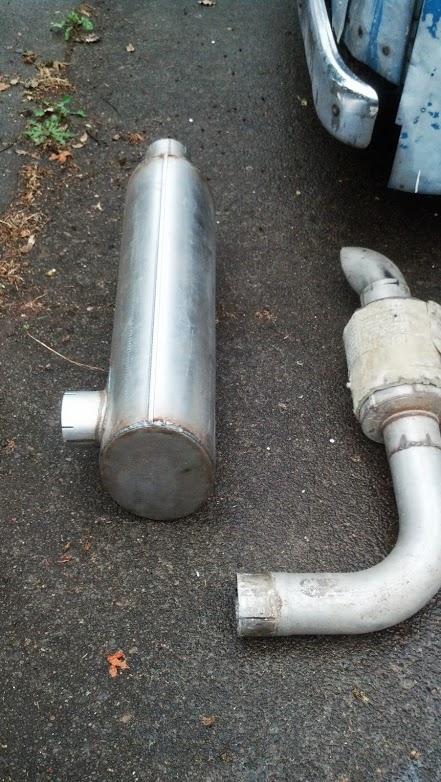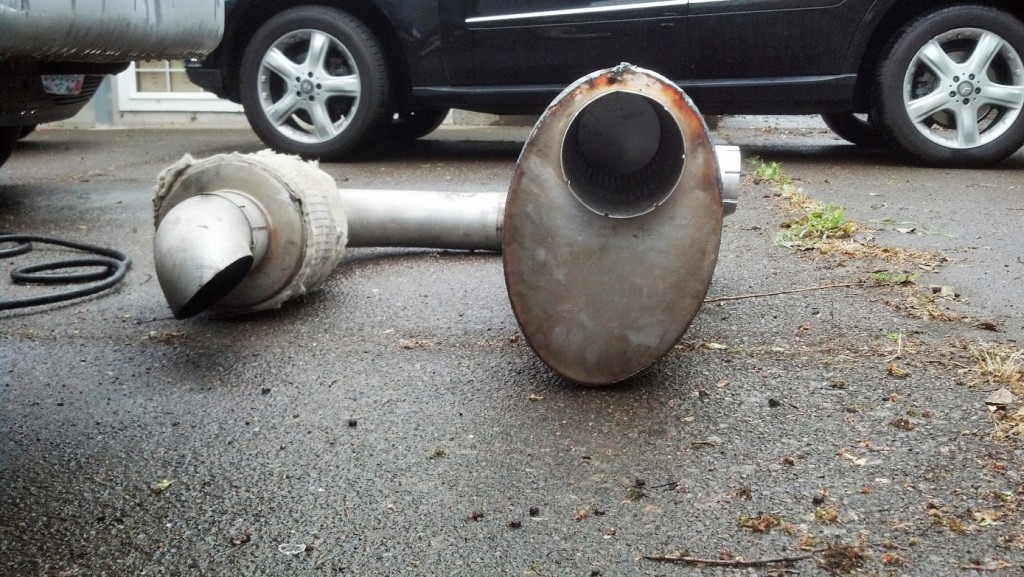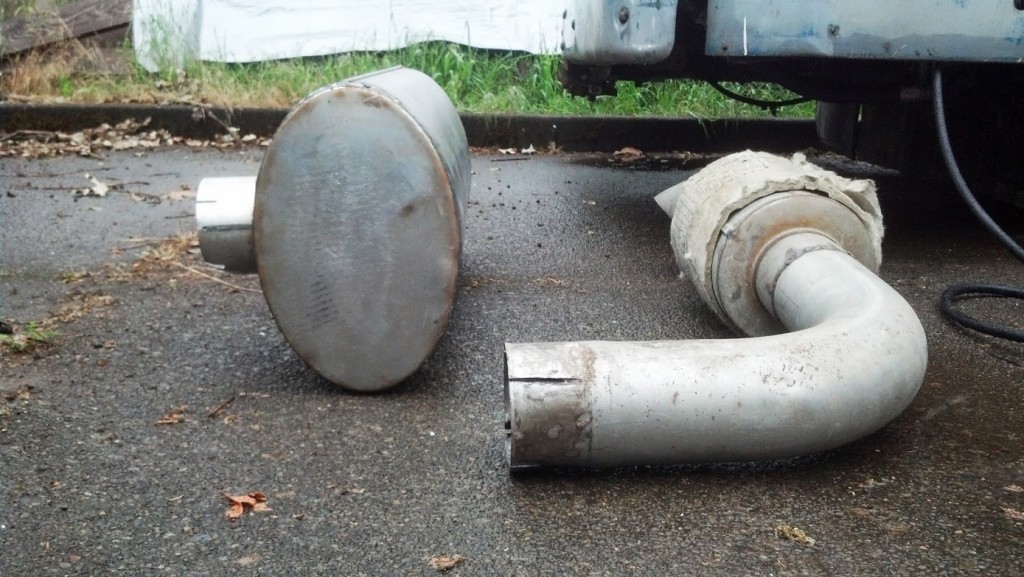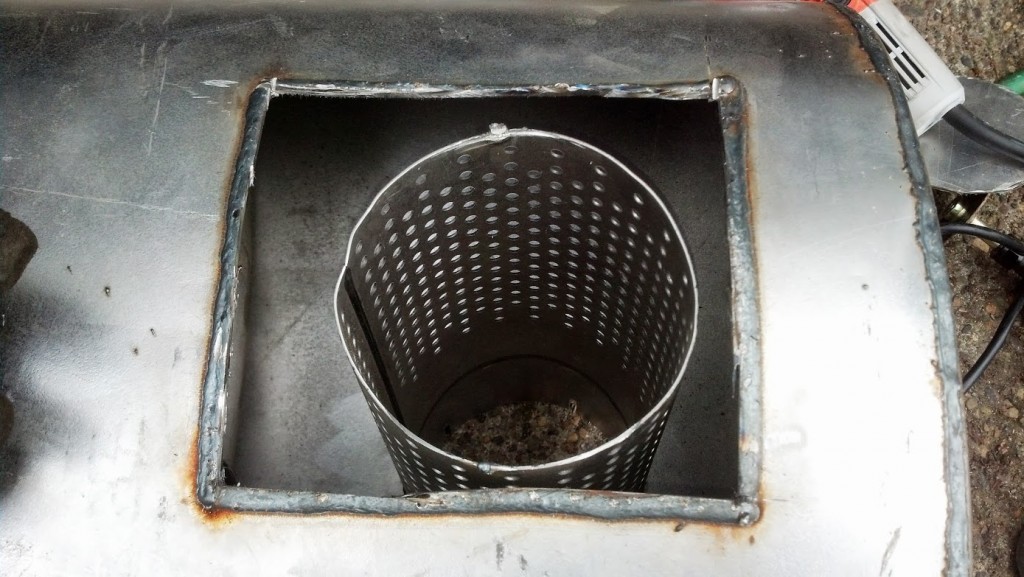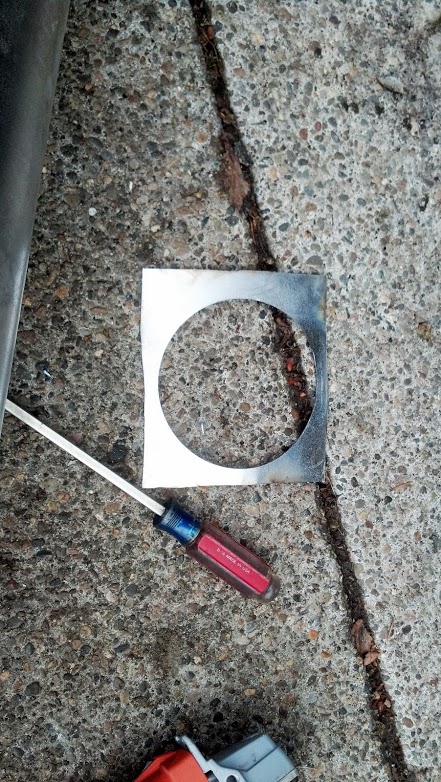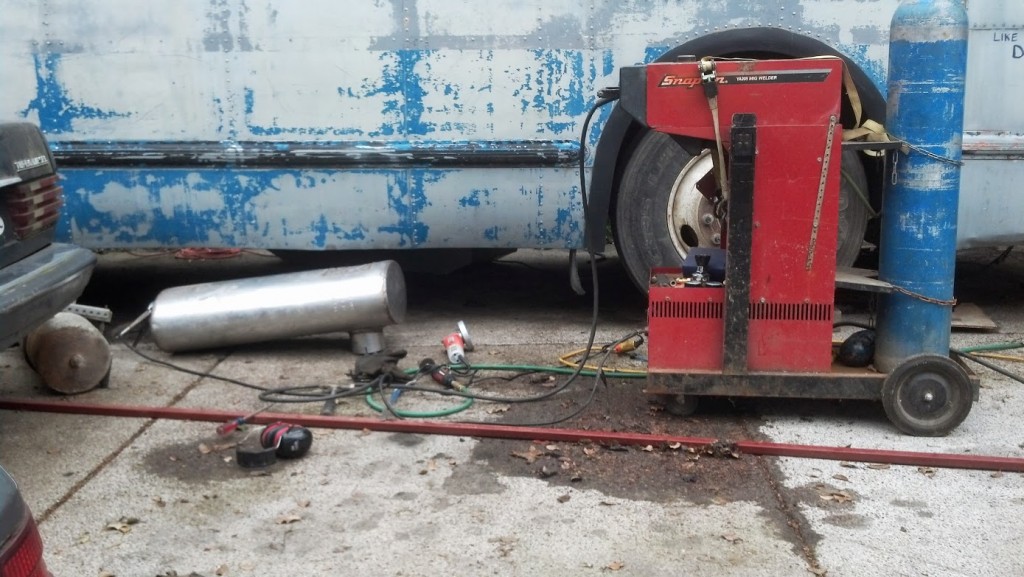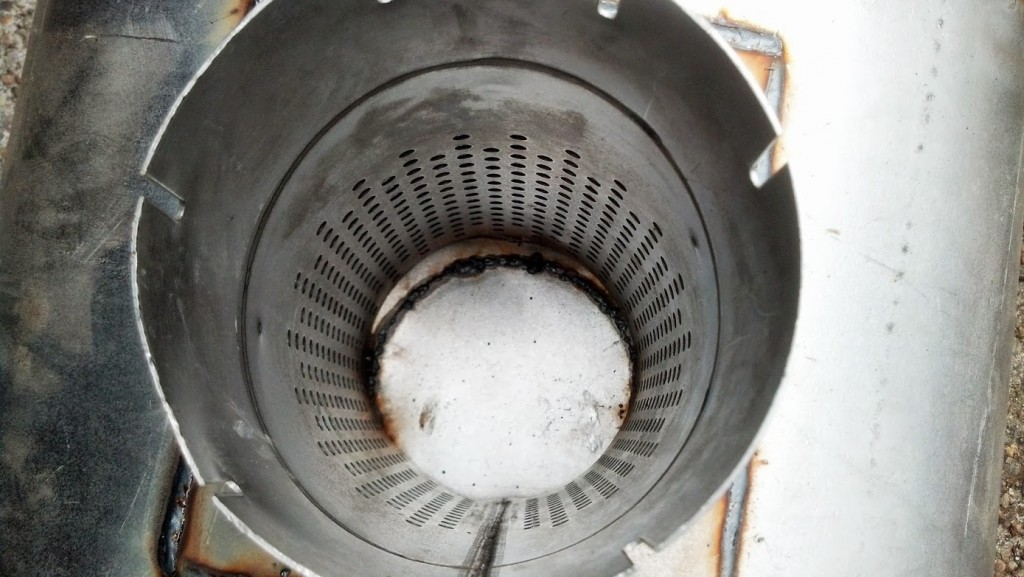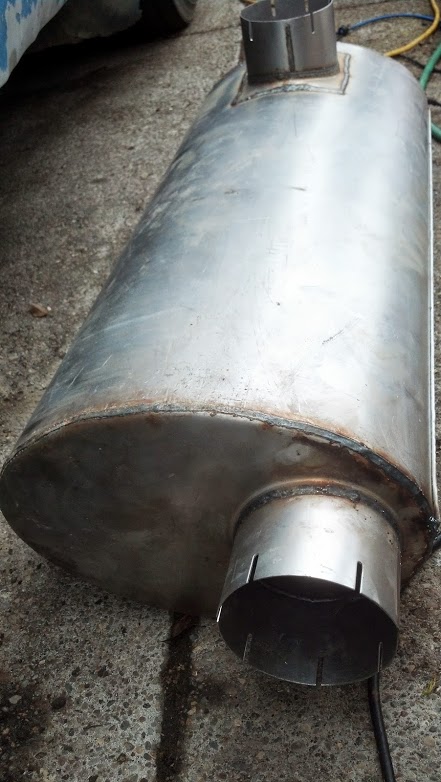Well I forgot to post awhile back that I had upgraded the exhaust system on The Ghost. There was significant motivation (both internal and external) to see if things could be quieted down a bit. The 5″ resonator combination was only providing (at best) about 3dB out of the box. Adding some batting internally and externally (fiberglass) helped with that but it still had a very tell-tale Detroit 2-stroke level of noise that sent the kids running.
So, seems very simple…just purchase a new muffler and bolt it on. I wish it was that easy…
The factory setup on the coach had two flat wide oval mufflers running off of 3 cylinders each on the forward side of the engine between it and the bulkhead. This worked okay, however the exhaust pipes were fairly small (2.5-2.75″?) and the cans were rotting out (from the outside, in). The upgrade (when replacing the cylinder head) was to install the 6 into 1 manifold (4″ native outlet), size it up to 5″, and add the resonator and a couple bends; passing through the firewall, placing the resonator on the other side, and the dump just ahead of the radiator on the drivers side. In looks, this worked very well. In practice and traveling over the road, it was WAY TOO LOUD.
Earlier this year I started hunting for the biggest 5″ in/out muffler that I could find that MIGHT fit in that restricted area just forward of the firewall bulkhead. I eventually settled on a Walker 22917 oval muffler (side inlet, end outlet) although the outlet was offset to the wrong side for my particular installation. This would require some modification, but it seemed within the realm of possibility so I plunked down the $186 to have one delivered to my door.
Once the muffler arrived, I started drafting up ideas for mounting and realized that the proposed modification should/would solve the issue. The critical dimension between the outlet of the engine where it passes through the bulkhead and the edge of the body is what made this the only muffler that would fit. Also, the narrow gap in this area meant a thicker/rounder/wider muffler was out of the question. As it turned out, if the muffler was >1.5″ larger in any dimension it would be impossible to place into that compartment without some serious slicing and dicing. I did some less serious slicing and dicing to move the inlet to the other side to allow the outlet to properly match up with the position I needed for final installation.
The next addition was to add a short piece (~6″) of 5″ flex pipe to aid in connection/vibration of this new much LARGER muffler. I’ve had the connection break loose at the manifold before due to the prior muffler’s weight (even with support on the end) so I want to remove as much tension off the manifold as possible. This short piece of flex also allowed me to use a band-clamp to connect the muffler to the existing piping (which will aid in removal later, if the need arises).
Once this was bolted into place, I added a support bracket with rubber isolator (re-used the old one) to support the end of the muffler. The turn-down was installed and held in place with the same clamp that was used to mount the support bracket. This, hopefully, will allow me to adjust the tip angle while entering/exiting Black Rock City to avoid kicking up even more dust into the radiator fan.
The final product ended up being a SUBSTANTIALLY quieter ride and exerting much less fatigue on drivers/passengers. Conversations can be had in the front seats while at-speed (shy of the wind noise) in normal volumes. The note from the drivers side of the coach is still present but is more of a muscle car level instead of a open 5″ stacks on a semi-truck sort of level. The CFM ratings on this unit were as high as I could find for that space, so I don’t feel too bad about adding too much more restriction into the outlet of my 6-71 two stroke. I believe the advertised numbers that walker presented.
Thanks for checking in!

